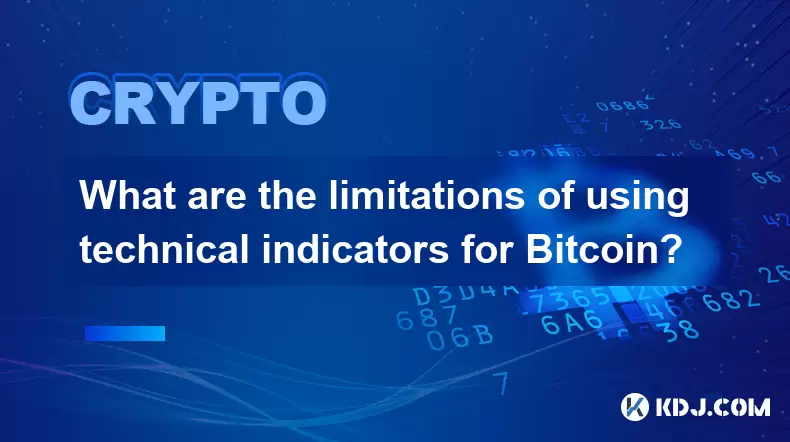-
 Bitcoin
Bitcoin $108,250.0992
0.11% -
 Ethereum
Ethereum $2,515.9404
0.03% -
 Tether USDt
Tether USDt $1.0003
0.00% -
 XRP
XRP $2.2166
-0.19% -
 BNB
BNB $656.5904
0.29% -
 Solana
Solana $147.4122
-0.58% -
 USDC
USDC $1.0000
-0.01% -
 TRON
TRON $0.2830
0.06% -
 Dogecoin
Dogecoin $0.1641
0.27% -
 Cardano
Cardano $0.5739
-0.19% -
 Hyperliquid
Hyperliquid $39.1463
-0.11% -
 Sui
Sui $2.8882
-0.02% -
 Bitcoin Cash
Bitcoin Cash $487.6428
0.31% -
 Chainlink
Chainlink $13.2097
0.07% -
 UNUS SED LEO
UNUS SED LEO $9.0308
0.10% -
 Avalanche
Avalanche $17.8608
0.13% -
 Stellar
Stellar $0.2379
-0.06% -
 Toncoin
Toncoin $2.7400
-0.39% -
 Shiba Inu
Shiba Inu $0.0...01144
-0.36% -
 Litecoin
Litecoin $87.5467
0.66% -
 Hedera
Hedera $0.1538
0.22% -
 Monero
Monero $315.5479
0.36% -
 Dai
Dai $1.0000
0.00% -
 Polkadot
Polkadot $3.3523
-0.71% -
 Ethena USDe
Ethena USDe $1.0003
0.01% -
 Bitget Token
Bitget Token $4.3960
-1.03% -
 Uniswap
Uniswap $7.2663
4.19% -
 Aave
Aave $272.8619
2.04% -
 Pepe
Pepe $0.0...09676
-0.18% -
 Pi
Pi $0.4586
-2.87%
How to use Gann Fans to find potential support and resistance for Bitcoin?
The Gann Fan helps Bitcoin traders identify key support and resistance levels using geometric angles anchored to significant price points.
Jul 05, 2025 at 11:28 pm

What is the Gann Fan and How Does It Work?
The Gann Fan is a technical analysis tool developed by W.D. Gann, a legendary trader known for his unique approach to market prediction. This tool consists of a series of diagonal lines drawn from a significant price point at predetermined angles—most notably 1x1 (45 degrees), 2x1, 1x2, 3x1, 1x3, and so on. These angles represent potential levels of support and resistance based on time and price relationships.
In the context of Bitcoin trading, the Gann Fan helps identify key price zones where the asset might reverse or consolidate. The core idea is that prices tend to respect these geometric angles, especially when they align with previous highs, lows, or major trend lines. Traders use these intersections as possible entry or exit points.
To apply the Gann Fan effectively, it's crucial to anchor it correctly to a significant pivot point—either a swing high or low. Once placed, the fan unfolds across the chart, offering a visual guide to future support and resistance areas.
Setting Up the Gann Fan on a Bitcoin Chart
Before diving into interpretation, you need to set up the Gann Fan properly on your trading platform. Most modern platforms like TradingView, MetaTrader, or Binance’s native tools offer this feature in their drawing options.
- Click on the "Gann Fan" tool under the drawing menu.
- Locate a strong swing high or swing low on the Bitcoin chart. This could be a recent major top or bottom.
- Click on that pivot point and drag the mouse in the direction of the trend. The fan should extend outward, displaying multiple angled lines.
It’s important to ensure the chart is on a consistent time frame—such as daily or 4-hour intervals—for more reliable readings. Avoid using erratic or compressed time frames, which can distort the angle calculations.
Once plotted, each line corresponds to a different rate of price movement relative to time. For example, the 1x1 line suggests equal movement in price and time, often considered the most critical level.
Interpreting Gann Fan Angles for Bitcoin Support and Resistance
Each line in the Gann Fan serves a specific purpose. The 1x1 line is typically seen as a balanced trendline—if Bitcoin remains above this line during an uptrend, the trend is considered healthy. Conversely, if it falls below, it may signal weakness.
Other lines like 2x1 (steeper) indicate faster upward momentum, while 1x2 (flatter) represents slower progress. When Bitcoin approaches any of these lines, traders watch for signs of reversal or consolidation. A bounce off the 1x1 support line during a pullback could suggest a continuation of the prior trend.
Resistance functions similarly. If Bitcoin faces rejection at a Gann angle such as 2x1, it may struggle to move higher until the time component catches up. These levels become even more powerful when they coincide with Fibonacci retracement levels or moving averages.
Traders also look for confluence between Gann Fan lines and historical price action. For instance, if a current Gann angle overlaps with a past resistance zone, that area becomes a stronger candidate for a reversal.
Combining Gann Fans with Other Indicators for Confirmation
Using the Gann Fan in isolation can lead to false signals, especially in the volatile world of Bitcoin trading. Therefore, it’s wise to combine it with other technical indicators to increase accuracy.
One effective method is to overlay volume indicators. If Bitcoin approaches a Gann Fan resistance line and volume drops significantly, it may confirm a lack of buying pressure and hint at a likely reversal.
Another strategy involves pairing the Gann Fan with oscillators like RSI or MACD. For example, if Bitcoin touches the 1x2 support line and RSI shows oversold conditions, it strengthens the case for a bounce.
Additionally, traders often integrate candlestick patterns for confirmation. A bullish engulfing pattern near a Gann Fan support line increases the probability of a successful trade setup.
These combinations help filter out noise and provide clearer decision-making criteria when analyzing Bitcoin’s price behavior around Gann Fan levels.
Practical Example: Applying Gann Fans to a Bitcoin Chart
Let’s walk through a real-world scenario using a Bitcoin chart.
Suppose Bitcoin recently formed a swing low at $26,000 after a sharp decline. You place the Gann Fan starting from that low and extend it forward. Over the next few weeks, Bitcoin begins to rise and pulls back occasionally.
During one of these pullbacks, Bitcoin touches the 1x1 line and bounces off it strongly. Volume during the bounce appears slightly above average, suggesting institutional interest. Simultaneously, RSI doesn’t dip below 30, indicating the pullback wasn’t overly bearish.
This confluence supports the idea that the 1x1 line acted as dynamic support. Traders who recognized this could have entered long positions with a stop just below the Gann Fan line.
Later, when Bitcoin reaches the 2x1 line, it encounters resistance. Price stalls and forms a bearish pin bar candlestick pattern. RSI tops out above 70, signaling overbought conditions. This combination suggests a high likelihood of a pullback, reinforcing the 2x1 line as a valid resistance zone.
Frequently Asked Questions
Q: Can Gann Fans be used on all timeframes for Bitcoin?
A: While Gann Fans can technically be applied to any timeframe, they are most effective on higher timeframes like the daily or 4-hour charts due to reduced volatility and more reliable trend structure.
Q: Should I always start the Gann Fan from the most recent pivot point?
A: Not necessarily. Sometimes older, more significant swing highs or lows provide better context, especially if they coincide with major market events or structural breaks in Bitcoin’s price history.
Q: Do Gann Fans work equally well in bull and bear markets?
A: They function in both environments but require careful anchoring. In bear markets, focus on descending fans anchored to swing highs; in bull markets, use ascending fans from swing lows.
Q: Are Gann Fans subjective like other technical tools?
A: Yes, interpretation can vary depending on where the fan is anchored. To reduce subjectivity, use objective criteria like confirmed swing points and combine with other confirming indicators.
Disclaimer:info@kdj.com
The information provided is not trading advice. kdj.com does not assume any responsibility for any investments made based on the information provided in this article. Cryptocurrencies are highly volatile and it is highly recommended that you invest with caution after thorough research!
If you believe that the content used on this website infringes your copyright, please contact us immediately (info@kdj.com) and we will delete it promptly.
- XRP's Upside Potential: Analysts Bullish Despite Accessibility Concerns
- 2025-07-06 10:30:13
- Dubai Hotelier, Crypto Scam, and an Arrest in India: A Tangled Web
- 2025-07-06 10:30:13
- Bitcoin's Calm Before the Storm: ETF Inflows Surge Amidst Low Volatility
- 2025-07-06 10:50:13
- Crypto Capital Inflows: Why Qubetics, Ethereum, and SUI are Investment Coins to Watch
- 2025-07-06 10:50:13
- XRP Price Prediction: Can XRP Break the Weekly Downtrend?
- 2025-07-06 11:00:13
- Bitcoin: Technology, Value Gamble, and the $100,000 Milestone
- 2025-07-06 11:00:13
Related knowledge

What is the Woodies CCI indicator and can it be used for Bitcoin?
Jul 04,2025 at 05:14pm
Understanding the Woodies CCI IndicatorThe Woodies CCI indicator is a variation of the traditional Commodity Channel Index (CCI), which was originally developed by Donald Lambert. The standard CCI measures the current price level relative to an average price over a given period, typically 14. However, the Woodies version modifies this calculation to mak...

How to use indicators to trade the opening range breakout for Bitcoin CME futures?
Jul 05,2025 at 07:35pm
What Is the Opening Range Breakout Strategy?The opening range breakout (ORB) strategy is a popular trading technique used in both traditional markets and cryptocurrency futures, particularly for Bitcoin on the CME. This method involves identifying a specific price range formed during the early phase of a trading session and then taking positions when th...

What does a bearish cross on the Stochastic RSI mean for Bitcoin?
Jul 05,2025 at 07:18pm
Understanding the Stochastic RSI IndicatorThe Stochastic RSI (Relative Strength Index) is a momentum oscillator used in technical analysis to identify overbought or oversold conditions in an asset's price. It combines two well-known indicators — the RSI and the Stochastic Oscillator — to provide more nuanced signals than either could alone. The Stochast...

What are the limitations of using technical indicators for Bitcoin?
Jul 06,2025 at 03:35am
Understanding the Role of Technical Indicators in Cryptocurrency TradingIn the realm of Bitcoin trading, technical indicators are tools used by traders to analyze historical price data and volume to predict future price movements. These indicators—such as Moving Averages, Relative Strength Index (RSI), and MACD—are widely adopted across traditional fina...

How to use the historical volatility indicator for Bitcoin options trading?
Jul 06,2025 at 04:14am
Understanding the Historical Volatility IndicatorThe historical volatility indicator (HV) is a statistical measure used to assess the price fluctuations of an asset over a specific time period. In the context of Bitcoin options trading, this metric helps traders evaluate past price movements to anticipate potential future swings. Unlike implied volatili...

How to interpret the interaction between Bitcoin's price and the Ichimoku baseline (Kijun-sen)?
Jul 05,2025 at 11:42pm
Understanding the Ichimoku Baseline (Kijun-sen) in Technical AnalysisThe Ichimoku Cloud, also known as Ichimoku Kinko Hyo, is a comprehensive technical analysis tool that provides insights into momentum, trend direction, and potential support/resistance levels. Within this system, the Kijun-sen, or baseline, plays a crucial role. It is calculated by ave...

What is the Woodies CCI indicator and can it be used for Bitcoin?
Jul 04,2025 at 05:14pm
Understanding the Woodies CCI IndicatorThe Woodies CCI indicator is a variation of the traditional Commodity Channel Index (CCI), which was originally developed by Donald Lambert. The standard CCI measures the current price level relative to an average price over a given period, typically 14. However, the Woodies version modifies this calculation to mak...

How to use indicators to trade the opening range breakout for Bitcoin CME futures?
Jul 05,2025 at 07:35pm
What Is the Opening Range Breakout Strategy?The opening range breakout (ORB) strategy is a popular trading technique used in both traditional markets and cryptocurrency futures, particularly for Bitcoin on the CME. This method involves identifying a specific price range formed during the early phase of a trading session and then taking positions when th...

What does a bearish cross on the Stochastic RSI mean for Bitcoin?
Jul 05,2025 at 07:18pm
Understanding the Stochastic RSI IndicatorThe Stochastic RSI (Relative Strength Index) is a momentum oscillator used in technical analysis to identify overbought or oversold conditions in an asset's price. It combines two well-known indicators — the RSI and the Stochastic Oscillator — to provide more nuanced signals than either could alone. The Stochast...

What are the limitations of using technical indicators for Bitcoin?
Jul 06,2025 at 03:35am
Understanding the Role of Technical Indicators in Cryptocurrency TradingIn the realm of Bitcoin trading, technical indicators are tools used by traders to analyze historical price data and volume to predict future price movements. These indicators—such as Moving Averages, Relative Strength Index (RSI), and MACD—are widely adopted across traditional fina...

How to use the historical volatility indicator for Bitcoin options trading?
Jul 06,2025 at 04:14am
Understanding the Historical Volatility IndicatorThe historical volatility indicator (HV) is a statistical measure used to assess the price fluctuations of an asset over a specific time period. In the context of Bitcoin options trading, this metric helps traders evaluate past price movements to anticipate potential future swings. Unlike implied volatili...

How to interpret the interaction between Bitcoin's price and the Ichimoku baseline (Kijun-sen)?
Jul 05,2025 at 11:42pm
Understanding the Ichimoku Baseline (Kijun-sen) in Technical AnalysisThe Ichimoku Cloud, also known as Ichimoku Kinko Hyo, is a comprehensive technical analysis tool that provides insights into momentum, trend direction, and potential support/resistance levels. Within this system, the Kijun-sen, or baseline, plays a crucial role. It is calculated by ave...
See all articles

























































































